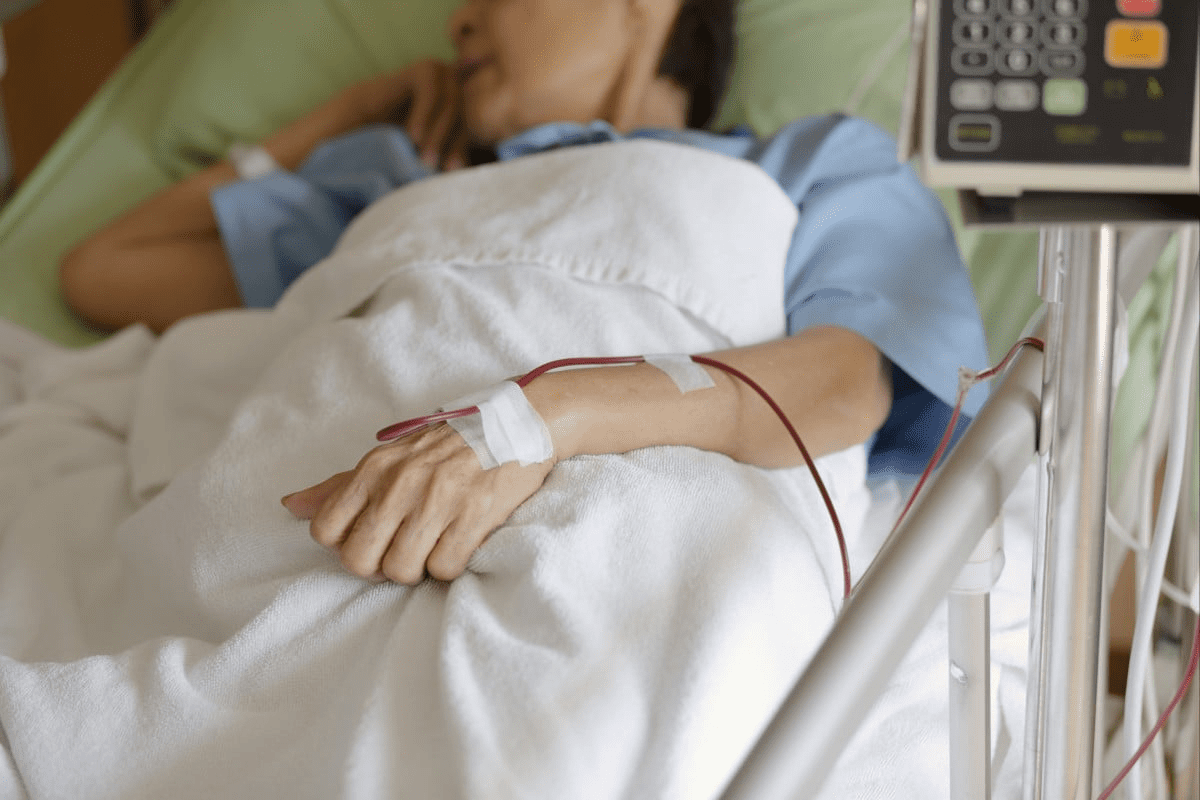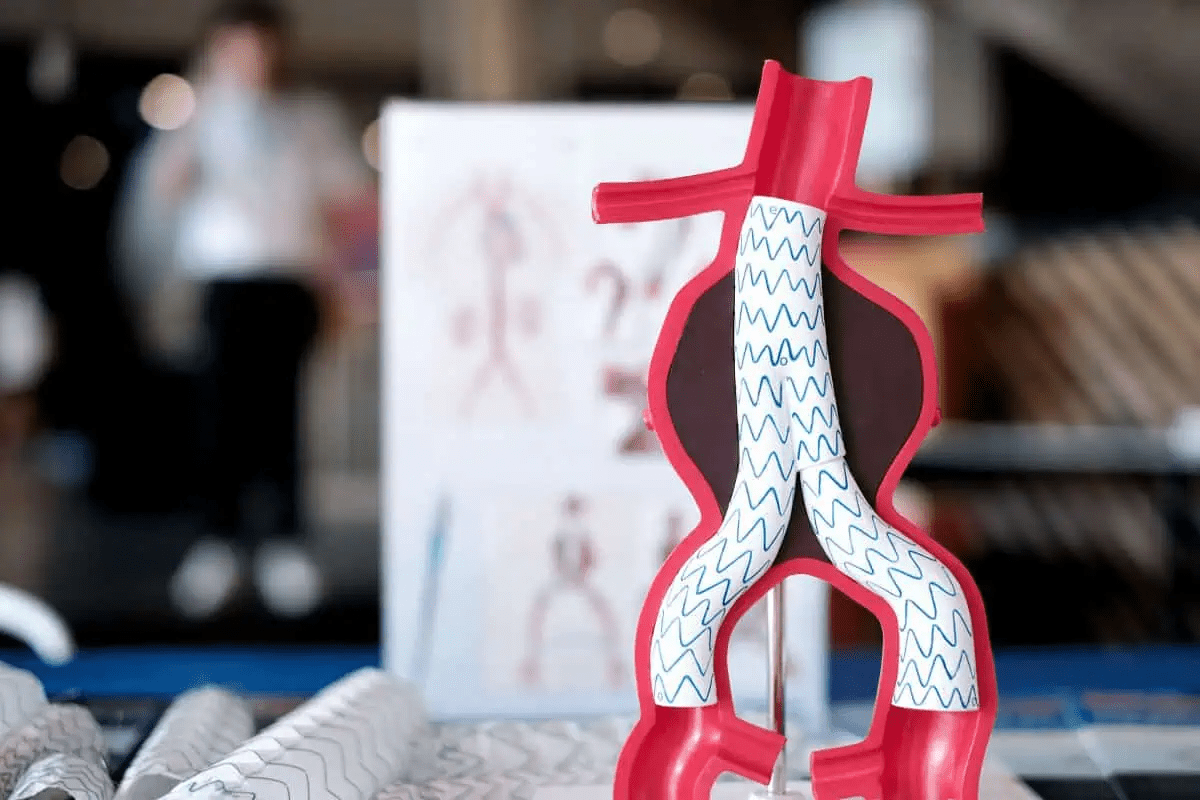Last Updated on November 27, 2025 by Bilal Hasdemir

Getting a headache after a CT scan with contrast can worry you. But, it’s not a common side effect. At Liv Hospital, we focus on you and follow the latest medical standards. We address your concerns with the best evidence-based care.
A CT scan uses X-rays to show the body’s inside details. The contrast dye makes some areas clearer, helping doctors make better diagnoses.
Even though contrast dye is mostly safe, some people might get headaches. We’ll look into why headaches happen after CT scans with contrast. We aim to give you all the info you need to feel better.
Key Takeaways
- Headache after CT scan with contrast is an uncommon side effect.
- Contrast dye enhances the visibility of certain areas during a CT scan.
- Understanding the causes and risks can help alleviate concerns.
- Liv Hospital prioritizes patient-centered care and evidence-based protocols.
- Relief options are available for managing headaches after CT scans.
Understanding CT Scans With Contrast

CT scans with contrast dye are key in diagnosing many medical conditions. They give clear images of the body’s internal structures. We’ll explore how CT scans work, the role of contrast dye, and the various contrast agents used.
What Is a CT Scan?
A CT scan is a non-invasive test that shows the body’s inside. It uses X-rays from different angles to create detailed images. This helps doctors diagnose many conditions.
Role of Contrast Dye in Imaging
Contrast dye enhances the visibility of body structures in medical images. It absorbs X-rays differently than tissues, making certain areas stand out. This helps doctors see blood vessels, tumors, and other issues clearly.
Types of Contrast Agents Used
There are several contrast agents for CT scans, based on their chemical makeup and how they’re given. The most common include:
| Type of Contrast Agent | Description | Usage |
| Iodinated Contrast Agents | Contain iodine, which absorbs X-rays, making them visible on CT scans. | Commonly used for CT scans of various body parts, including the brain, neck, and abdomen. |
| Barium-based Contrast Agents | Contain barium sulfate, used for imaging the gastrointestinal tract. | Used for CT scans focusing on the digestive system. |
Knowing about different contrast agents and their uses is important. It helps both doctors and patients make better choices about medical tests.
Headache After CT With Contrast: An Overview

Many people worry about headaches after a CT scan with contrast. We’ll look at how common these headaches are, when they happen, and how long they last. We’ll also help you tell if your headache is normal or if you should worry.
Prevalence of Post-Scan Headaches
Headaches after a CT scan with contrast are not very common. But they can happen. The number of people who get headaches varies in different studies.
Prevalence Rates:
| Study | Prevalence Rate |
| Study A | 2.5% |
| Study B | 1.8% |
| Study C | 3.1% |
Timing and Duration of Symptoms
When and how long headaches last after a CT scan with contrast can differ. Some people feel them right away, while others wait hours. Usually, these headaches don’t last long, going away in a few hours.
Factors Influencing Duration:
- How sensitive you are to the contrast dye
- How much water you drink
- If you already have headaches
Differentiating Normal vs. Concerning Headaches
It’s important to know if your headache is normal or if it’s something to worry about after a CT scan with contrast. Normal headaches are mild and don’t last long. But, headaches that are severe, last a long time, or come with other symptoms like nausea or dizziness are concerning.
Red Flags for Concerning Headaches:
- Headaches that are very severe
- Headaches that last more than 24 hours
- Headaches with other symptoms like dizziness or nausea
Fact 1: Headache is an Uncommon But Documented Side Effect
Headaches after a CT scan with contrast are rare but known. We’ll look at how often they happen, who gets them, and what medical studies say.
Statistical Occurrence Rates
Studies show headaches after CT scans with contrast are rare. Less than 5% of patients get headaches. For example, a study found 32 headaches out of 1,000 patients.
Here’s a table with more data:
| Study | Number of Patients | Headache Incidence | Percentage |
| Study A | 500 | 15 | 3% |
| Study B | 1,000 | 32 | 3.2% |
| Study C | 750 | 20 | 2.67% |
Patient Demographics Most Affected
Some people are more likely to get headaches after CT scans. Those with a history of migraines or headaches are at higher risk. Younger adults and women are also more likely to experience headaches.
Documentation in Medical Literature
Headaches after CT scans with contrast are documented in medical studies. These studies discuss how common they are, why they happen, and how to manage them. For example, a review talked about several cases where patients got headaches after contrast dye, stressing the importance of awareness for healthcare providers.
While headaches after CT scans are rare, they can worry patients. Knowing how often they happen, who gets them, and what studies say helps us address their concerns and offer the right care.
Fact 2: Most CT Scans for Headache Show Normal Findings
Studies show that most CT scans for headaches are normal. This fact is important for both patients and doctors. It changes how we diagnose and treat headaches.
The 82% Normal Finding Statistic
A study in a top medical journal found that 82% of CT scans for headaches were normal Frontiers in Neurology. This shows we need to think carefully about when to use CT scans for headaches.
Many things can lead to normal CT scan results. These include the type of headache, the patient’s age and health, and the reasons for the scan.
When CT Scans Are Necessary for Headache Evaluation
To decide if a CT scan is needed, doctors look at several things. They check for red flags like sudden, severe headaches or headaches with other symptoms. They also consider the patient’s medical history.
Doctors must balance the benefits of CT scans against the risks. These risks include radiation and side effects from contrast dye, which can cause headache after MRI with contrast or other problems.
Cost-Benefit Analysis of Scanning for Headaches
Getting a CT scan for headaches costs money and can pose risks to the patient. It’s important to weigh these costs against the benefits. This helps decide if CT scans are the right choice in healthcare.
| Factors | Benefits | Risks/Costs |
| Diagnostic Accuracy | Identifies life-threatening conditions | Radiation exposure |
| Patient Reassurance | Normal findings can reduce anxiety | False positives can increase anxiety |
| Cost Implications | Early detection can reduce long-term costs | Expensive procedure |
In summary, even though most CT scans for headaches are normal, choosing who to scan is key. Doctors should use their best judgment and follow guidelines. This way, CT scans help patients while keeping risks and costs low.
Fact 3: Contrast Dye Mechanisms That Trigger Headaches
Headaches from contrast dye happen due to how it interacts with blood vessels and nerves. When contrast dye is used in a CT scan, it can affect the body in different ways. This can lead to headaches in people who are sensitive.
Chemical Properties of Contrast Agents
Contrast agents make body structures or fluids stand out in medical images. They contain iodine or barium, making them visible on X-rays or CT scans. The chemical makeup of these agents affects how they interact with body tissues.
Iodinated contrast media, often used in CT scans, can cause blood vessels to widen or change. These changes might start headache mechanisms in some people.
How Contrast Affects Blood Vessels and Brain Tissue
Contrast dye can cause several body responses. It can change blood vessel size and how they let substances pass through. This can affect blood flow and start headache pathways.
- Increased permeability can lead to the release of various chemical mediators.
- Vasodilation can cause a change in blood flow patterns, potentially triggering headache.
Individual Sensitivity Factors
Not everyone gets a headache after a CT scan with contrast. How sensitive a person is plays a big role in whether they might get a headache.
- Pre-existing headache disorders or a history of migraine.
- Sensitivity to certain chemicals or medications.
- Dehydration status, as hydration levels can affect the body’s response to contrast agents.
Knowing these factors can help manage and lower the risk of getting a headache after a CT scan with contrast.
Fact 4: Associated Symptoms Beyond Headache
Patients may feel more than just a headache after a CT scan with contrast. It’s important to notice and handle other symptoms that can happen.
Nausea and Vomiting
Nausea and vomiting can happen after a CT scan with contrast. The dye used might upset some people’s stomachs. Staying hydrated is key, and sometimes, medicine is given to help.
Dizziness and Sensory Disturbances
Some people feel dizzy or have other sensory issues after a CT scan. These feelings can be mild or very strong. It’s vital to tell your doctor about these symptoms for the right help.
Allergic Reaction Symptoms
Allergic reactions to the dye are rare but can happen. Signs include hives, itching, and swelling. Knowing the signs of an allergic reaction is important. If you see these, get help right away.
Fact 5: Contrast-Induced Encephalopathy – A Rare Complication
CT scans with contrast can lead to a rare but serious condition called contrast-induced encephalopathy. This condition can have big effects on patients who get it. We will look into the signs, how it’s diagnosed, and how it’s treated.
Recognizing the Warning Signs
The symptoms of contrast-induced encephalopathy can vary. They often include severe headaches, confusion, seizures, and even coma in severe cases. It’s important for patients and doctors to know these signs after a CT scan with contrast. Prompt recognition of these warning signs is essential for timely intervention.
After a CT scan with contrast, patients should watch for any unusual neurological symptoms. If they have severe headaches or confusion, immediate medical attention is necessary.
Diagnostic Criteria
Diagnosing contrast-induced encephalopathy involves clinical evaluation and imaging studies. Doctors look for symptoms that can’t be explained by other causes and go away when the contrast is cleared. MRI or EEG findings may support the diagnosis by showing signs of encephalopathy.
The diagnostic process also rules out other possible causes of neurological symptoms. This includes stroke or infection. A detailed medical history and physical exam are key in this process.
Treatment Approaches
Treatment for contrast-induced encephalopathy focuses on managing symptoms and ensuring patient safety. This may include administration of anticonvulsants for seizure control and close monitoring in a clinical setting.
In most cases, symptoms of contrast-induced encephalopathy go away once the contrast is out of the body. Supportive care and monitoring are key during this time. Knowing about this rare complication helps patients and doctors take the right steps if symptoms show up.
Fact 6: Comparing CT and MRI Contrast Headaches
Contrast agents in CT and MRI scans can cause headaches. But, the type and how often these headaches happen are different. Knowing these differences helps us care for patients better.
Differences Between CT and MRI Contrast Agents
CT scans use iodinated contrast agents. These agents make blood vessels and lesions more visible. MRI scans, on the other hand, use gadolinium-based contrast agents (GBCAs). GBCAs are safe but can cause different side effects.
Iodinated contrast agents can cause an allergic-like reaction in some. GBCAs are more likely to cause nephrogenic systemic fibrosis in those with severe kidney disease.
Relative Risk Factors
The risk of headaches after CT or MRI scans with contrast varies. For CT scans, the dose of contrast, hydration, and past reactions matter. MRI scans have a lower risk, but the type of GBCA and kidney function are key.
| Imaging Modality | Contrast Agent Type | Relative Risk of Headache |
| CT Scan | Iodinated | Moderate |
| MRI Scan | Gadolinium-based | Low to Moderate |
Patient Experiences With Both Modalities
Patients who have had both CT and MRI scans with contrast report different headaches. Some say their headaches are worse after a CT scan. Others find their headaches last longer after an MRI.
Healthcare providers need to consider these differences when talking to patients about what to expect after imaging with contrast.
Understanding the differences in CT and MRI contrast agents and their effects on headaches helps us manage patient care better. We can give more accurate advice to those undergoing these tests.
Fact 7: Relief Methods for Post-Contrast Headaches
There are many ways to feel better after a CT scan with contrast. These include taking care of yourself right after the scan and trying natural remedies. It’s important to tackle headaches after a CT scan with a mix of methods.
Immediate Post-Procedure Care
Getting care right after a CT scan is key to avoiding headaches. Doctors watch over patients closely to catch any problems early.
Some important parts of this care include:
- Watching for allergic reactions
- Looking for signs of complications from the contrast
- Teaching patients how to care for themselves after the scan
Medication Options
There are many medicines to help with headaches after a CT scan. Doctors often start with over-the-counter pain relievers.
| Medication | Dosage | Frequency |
| Acetaminophen | 500mg | Every 4-6 hours |
| Ibuprofen | 400mg | Every 4-6 hours |
Hydration and Other Natural Remedies
Drinking lots of water is very helpful for headaches after a CT scan. It helps get rid of the contrast dye from your body.
Other natural ways to feel better include:
- Resting in a quiet, dark room
- Avoiding hard activities
- Using cold or warm compresses
By using these methods together, people can manage headaches after CT scans with contrast. Always listen to your doctor’s advice for the best results.
When to Seek Medical Attention After Imaging
It’s important to know when to get medical help after imaging. After a CT scan with contrast, you might worry about your health.
Emergency Warning Signs
Some symptoms need immediate care. If you have any of these, go to the emergency room right away:
- Severe headache that gets worse
- Difficulty breathing or feeling short of breath
- Rapid heartbeat or palpitations
- Confusion, dizziness, or loss of consciousness
- Allergic reactions like hives or itching
Act quickly if you experience any of these symptoms. They could mean a serious reaction to the contrast dye.
Follow-up Care Guidelines
If you have a mild headache after CT scan with contrast, you can try a few things at home. Drinking plenty of water is key to getting rid of the dye.
Over-the-counter pain relievers might help with headaches. But, always check with your doctor before taking any medicine.
Communicating Effectively With Healthcare Providers
Talking well with your healthcare team is important. Keep track of your symptoms, like when they started and how long they last.
When you talk to your healthcare provider, share all the details. This helps them give you the best care. If you’re wondering can contrast dye give you a headache, they can guide you based on your situation.
Conclusion
Understanding headaches after CT scans with contrast is key for patients. We’ve looked at seven important facts about these headaches. These facts cover causes, risks, and ways to feel better.
Most CT scans for headaches show nothing wrong, and contrast dye is usually safe. But, some people might get headaches from the dye. Symptoms like nausea and dizziness can also happen.
Though rare, a serious problem called contrast-induced encephalopathy can occur. Knowing how to ease symptoms, like staying hydrated and using certain medicines, helps a lot.
It’s also true that MRI contrast can cause headaches in some. This makes us wonder if MRI contrast can give you a headache. The main point is knowing about possible side effects and when to see a doctor makes the imaging process better.
We aim to give patients the knowledge they need for their diagnostic journeys. If you have a bad headache after a CT scan with contrast, talk to your doctor right away. They can guide you and help you feel better.
FAQ
What is a CT scan with contrast, and how does it work?
A CT scan with contrast uses X-rays and a special dye to show the body’s inside. The dye goes through a vein in your arm. It makes certain parts of the body stand out more.
Can contrast dye cause a headache after a CT scan?
Yes, contrast dye might cause headaches after a CT scan. This is not very common. The exact reason is not known, but it could be how the dye reacts with your body.
How common are headaches after CT scans with contrast?
Headaches after CT scans with contrast are rare. The exact number can change based on the dye used and the person’s health.
What are the symptoms associated with headache after CT with contrast?
Some people might feel nausea, dizziness, or changes in how they sense things after a CT scan with contrast. Rarely, they could have allergic reactions or something called contrast-induced encephalopathy.
How can I relieve a headache after a CT scan with contrast?
To ease a headache after a CT scan with contrast, try drinking lots of water, take over-the-counter pain meds, and rest. Your doctor might suggest other treatments too.
When should I seek medical attention after a CT scan with contrast?
If you have severe symptoms like trouble breathing, a fast heartbeat, or a really bad headache, get help right away. Also, if you’re worried about your symptoms or health, talk to your doctor.
Are headaches after CT scans with contrast different from those after MRI scans with contrast?
Headaches from CT and MRI scans can be similar, but the dyes used are different. This might change how likely you are to get a headache and other side effects.
Can I prevent headaches after CT scans with contrast?
It’s hard to avoid headaches after CT scans with contrast, but you can try to stay hydrated and manage stress. Talking to your doctor about your concerns might also help.
What should I discuss with my healthcare provider before undergoing a CT scan with contrast?
Talk to your doctor about any allergies or health issues before a CT scan with contrast. This helps them know if you might be at higher risk for side effects.
References
- Khosroshahi, N., & Gharibzadeh, S. (2025). Frequency of abnormal CT scans and correlation with primary complaints: A 200-patient study. Clinical Radiology Insights, 18(1), 59-68. https://www.ncbi.nlm.nih.gov/pmc/articles/PMC11781342/






